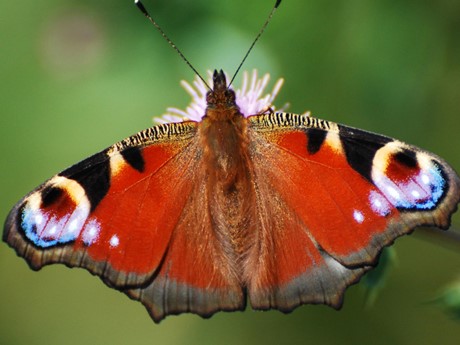Why do leaves change colour in the autumn?
Judith Garforth, 12/10/2021
Autumn is my absolute favourite time of year to be a Nature’s Calendar recorder. I love wrapping up warm, getting some fresh air and watching the trees that I monitor for the project gradually changing colour over the season. As we begin to get out 'first autumn tinting' records into Nature's Calendar this year, it’s made me stop and wonder why leaves change colour.

Beech in full autumn tint (Photo: Judith Garforth)

Oak in full autumn tint (Photo: Judith Garforth)
Why do leaves change colour during autumn?
Leaves are green in the summer because they contain the green pigment chlorophyll. This pigment is essential for photosynthesis, the process by which plants harness energy from sunlight. As autumn progresses and the trees get ready to shed their leaves, the production of chlorophyll slows down. Any chlorophyll remaining in the leaves is broken down and stored for future use by the tree.
As the amount of green pigment in the leaves reduces, the yellow and orange colours of their caretonoid pigments, which were masked by the chlorophyll during the summer, begin to show. These pigments are thought to help the leaves capture sunlight and also protect them from damage by too much light.
Additional autumn leaf colour comes from the red anthocyanin pigment which starts to be produced in leaves during autumn. Like caretonoids, anthocyanin pigments are thought to protect the leaves from damage by excessive light. Find out more about changing leaf colour.

Pedunculate oak. (Photo: Marcia Blackman )

Ash. (Photo: Mary Kerby)

Horse chestnut. (Photo: Peter Gordon Smith)

Beech. (Photo: Mary Kerby)

Oak. (Photo: James Crawford)

Silver birch. (Photo: Lucy Brake)
Why do alder leaves stay green during autumn?
Alder leaves tend not to have such colourful leaves in autumn as other broadleaves, and this is why they aren’t recorded for the Nature’s Calendar project (although you can record alder budburst and first leaf in spring). Chlorophyll, the green pigment in leaves, is partly made up of nitrogen. There is a theory that alder trees are able to shed their leaves while still green and containing chlorophyll because the trees don’t need to store the nitrogen from the chlorophyll for future use like other trees do. This is because they have a special relationship with bacteria in the soil which enables them to take up nitrogen more easily than other trees.
Fly agaric
Leaves aren’t the only source of autumn colour. Fly agaric brighten up the woodland floor with their distinctive red and white caps. We’ve received the first few sightings of fly agaric ‘first recorded’, so keep your eye peeled for these magical looking mushrooms.

Fly agaric (Photo: Charlotte Kennett)

Fly agaric (Photo: Cheryl Beales)

Fly agaric (Photo: Emmanuelle Denis)
What’s left to record this year?
Monitor your local trees and add records of first tinting, first leaf fall and full autumn tint. As autumn draws into winter and the leaves of broadleaf trees fall to the ground, bare trees will be some of the last events to record for Nature’s Calendar this year. Look out for redwings and fieldfares arriving to overwinter in the UK and we'd also like to know when you cut your lawn for the last time this year.
If it’s a mild winter, you might even spot some early signs of spring to record; we sometimes receive records of snowdrops flowering or even frogspawn appearing in ponds before Christmas.

